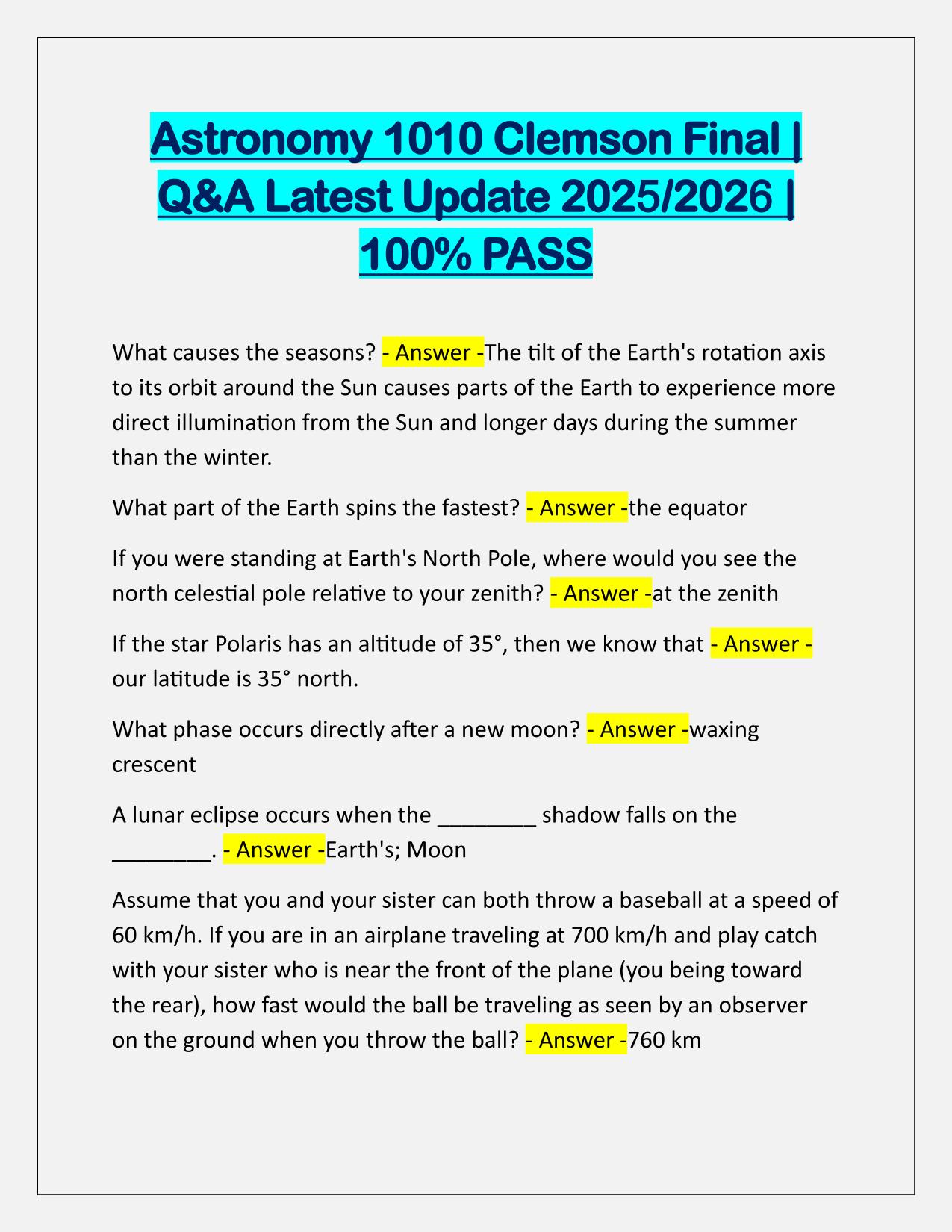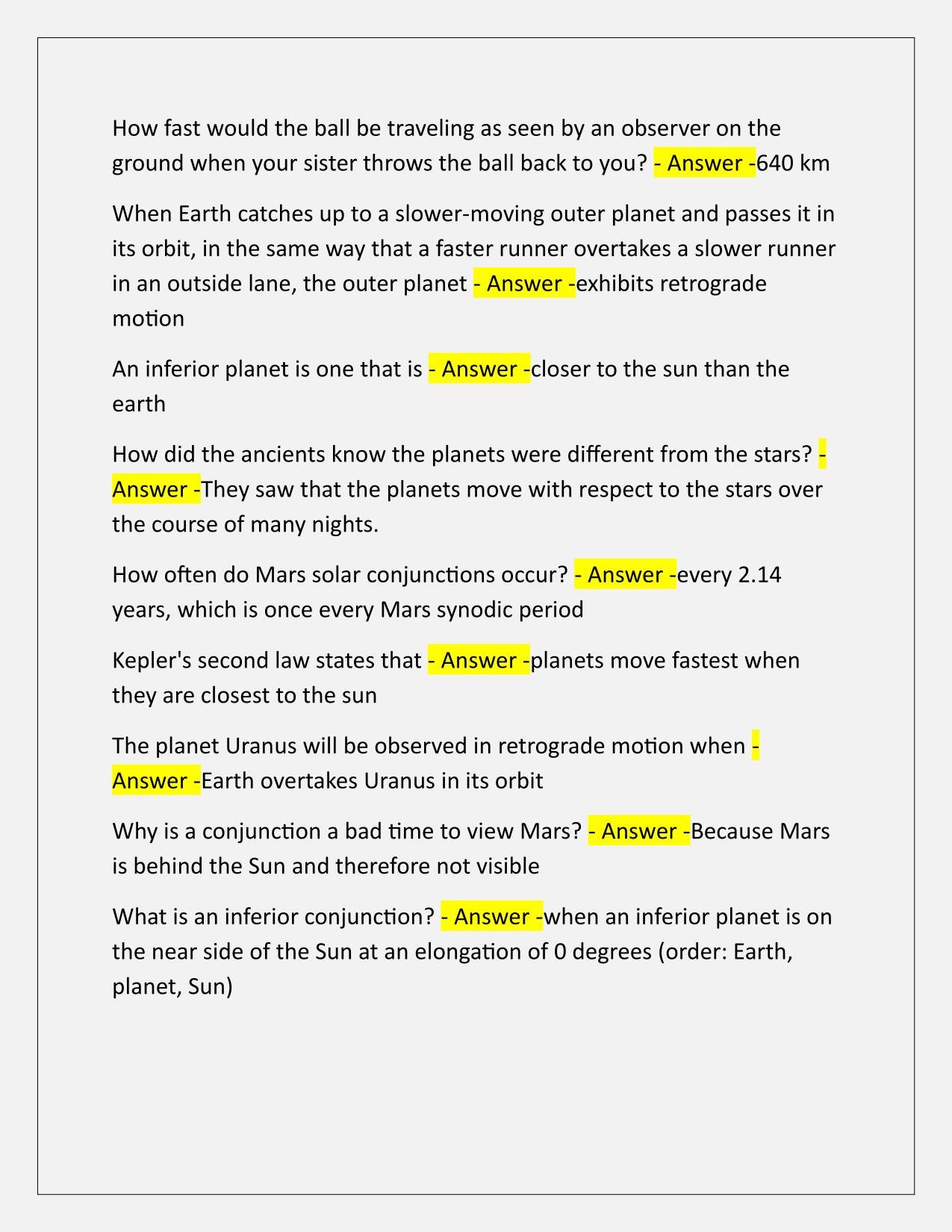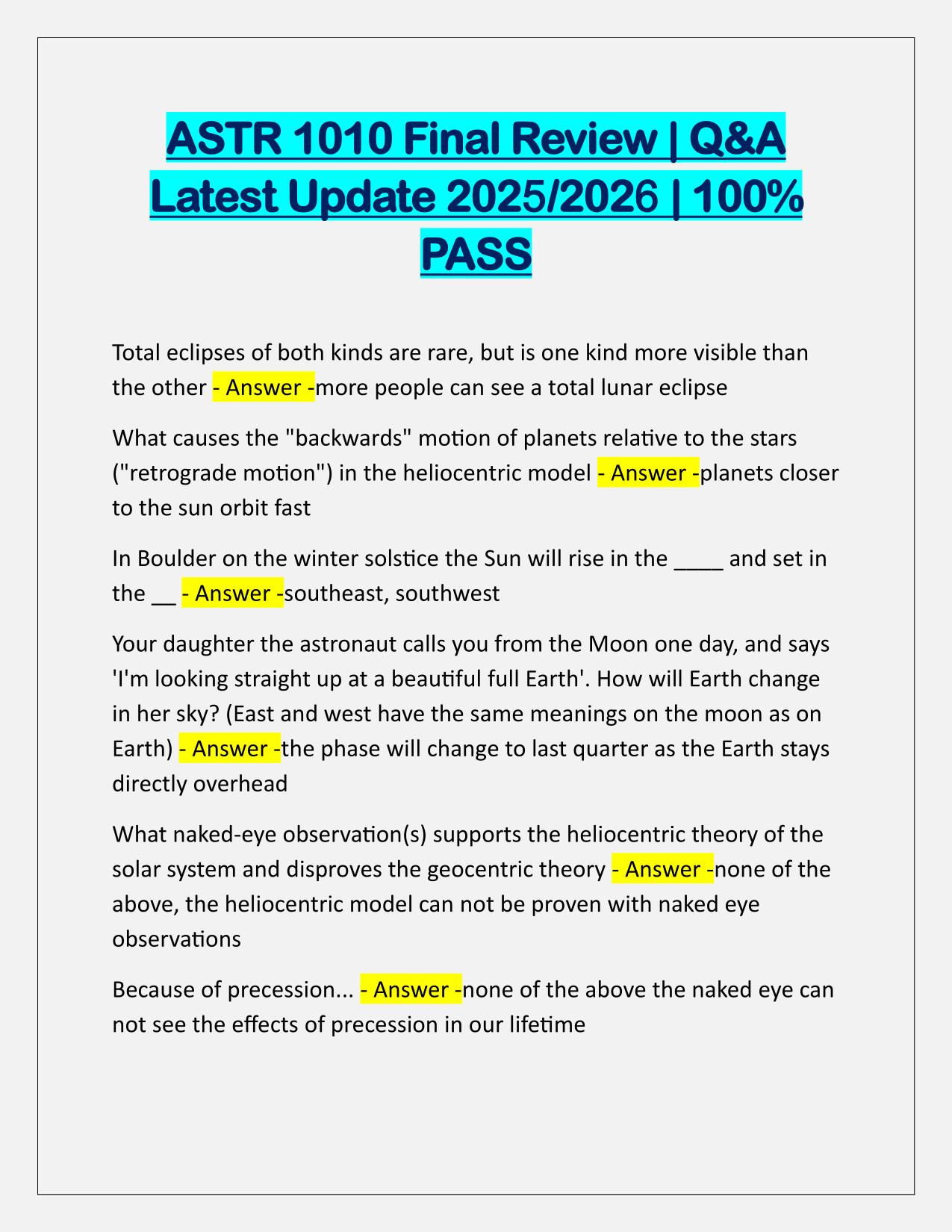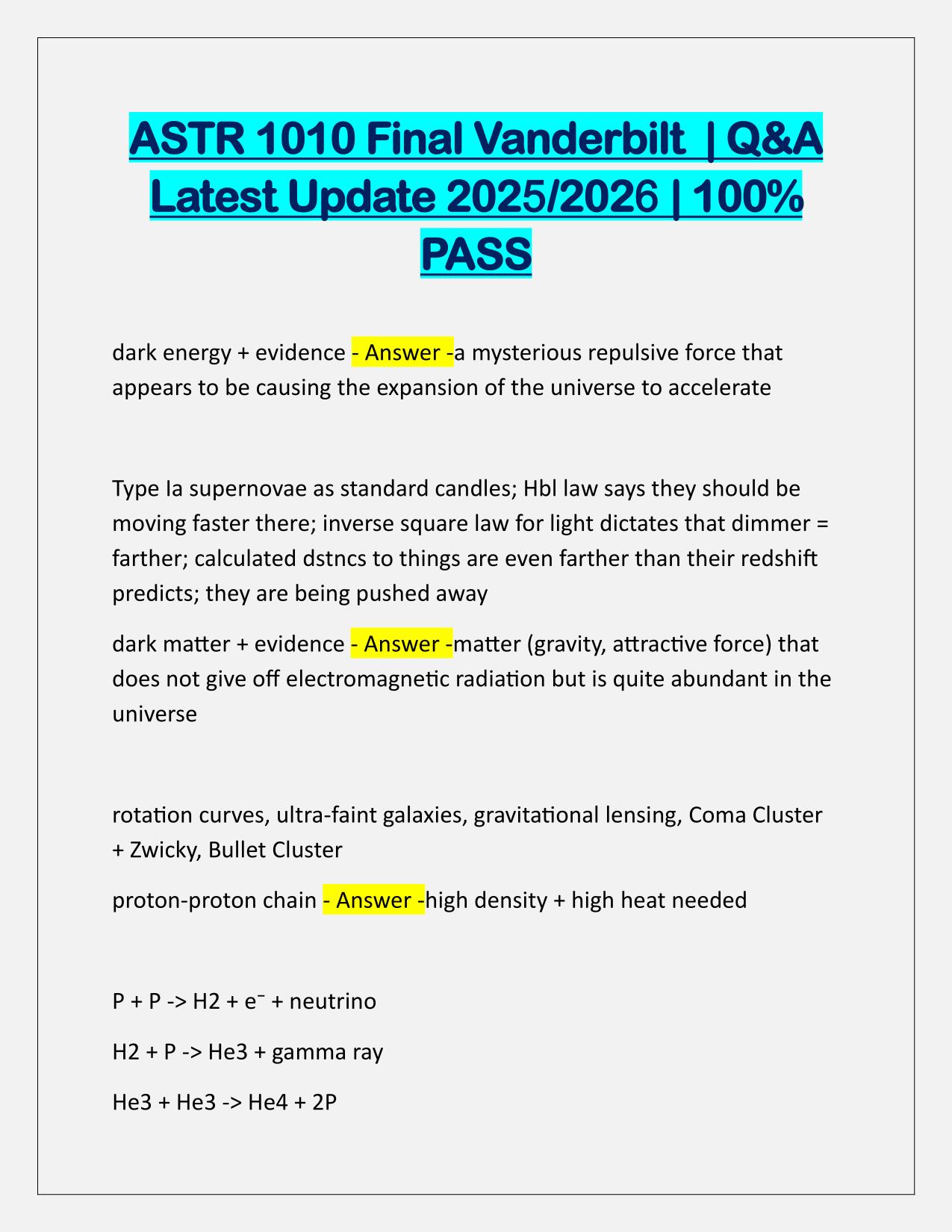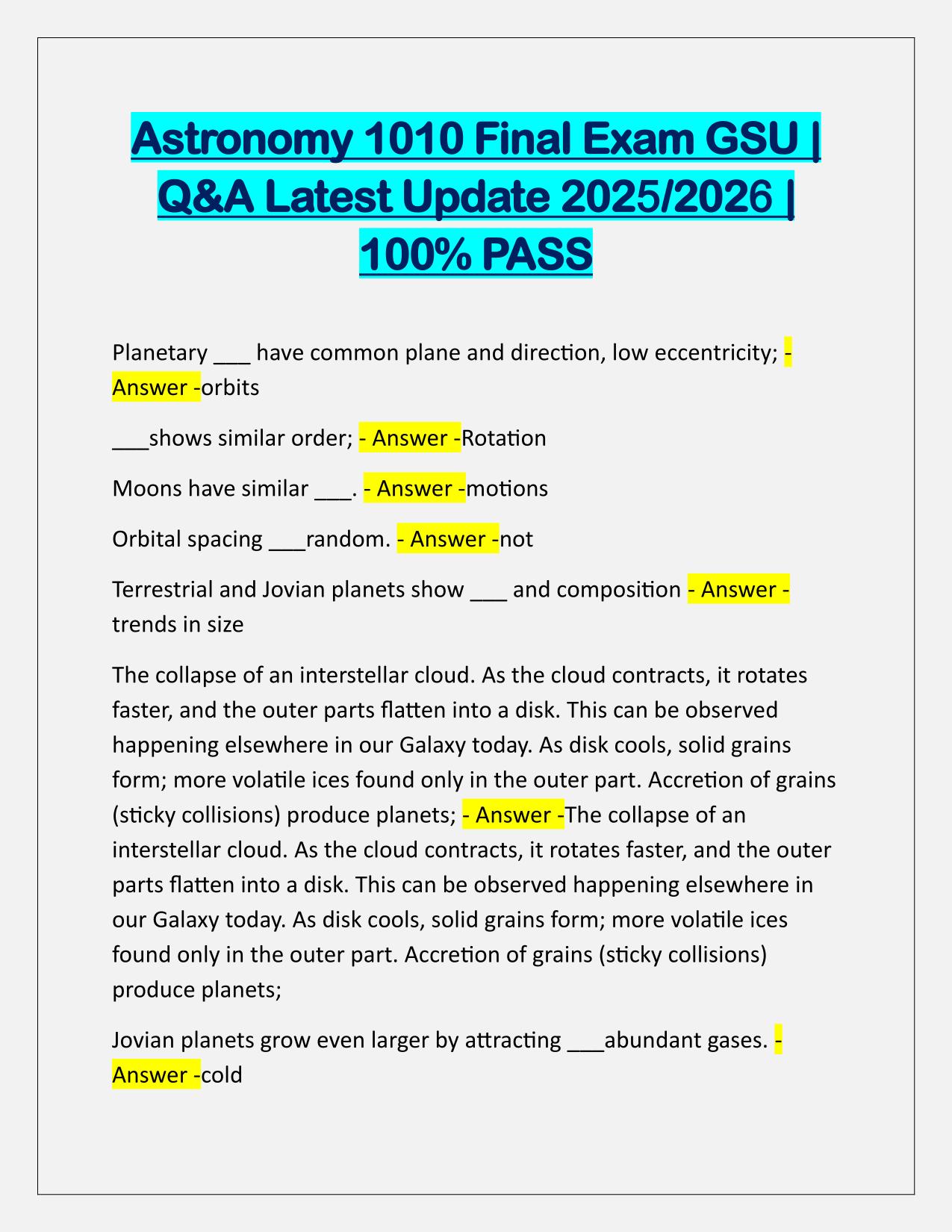Astronomy 1010 Clemson Final EXAM Q&A Latest Update
Course:
Astronomy 1010
Institution:
Astronomy 1010
Astronomy 1010 Clemson Final EXAM Q&A Latest Update
After purchase, you get:
✅ Instant PDF Download
✅ Verified answer explanations
✅ Refund if not Satisfied
✅ Prepared for 2025/2026 test cycle
Document Information
| Uploaded on: | May 12, 2025 |
| Last updated: | May 12, 2025 |
| Number of pages: | 12 |
| Written in: | 2025/2026 |
| Type: | Exam (elaborations) |
| Contains: | Questions & Answers |
| Tags: | Astronomy 1010 Clemson Final EXAM Q&A Latest Update |
Seller Information

AdelineJean
User Reviews (0)
Exam (Elaborations)
$8.00
Bundle Deal! Get all 7 docs for just $15.00
Add to Cart
100% satisfaction guarantee
Refund Upon dissatisfaction
Immediately available after purchase
Available in Both online and PDF
$8.00
| 0 sold
Related Documents
Available in a Bundle
Content Preview
Astronomy 1010 Clemson Final | Q&A Latest Update 2025/2026 | 100% PASS What causes the seasons? - Answer -The tilt of the Earth's rotation axis to its orbit around the Sun causes parts of the Earth to experience more direct illumination from the Sun and longer days during the summer than the winter. What part of the Earth spins the fastest? - Answer -the equator If you were standing at Earth's North Pole, where would you see the north celestial pole relative to your zenith? - Answer -at the zenith If the star Polaris has an altitude of 35°, then we know that - Answer our latitude is 35° north. What phase occurs directly after a new moon? - Answer -waxing crescent A lunar eclipse occurs when the ________ shadow falls on the ________. - Answer -Earth's; Moon Assume that you and your sister can both throw a baseball at a speed of 60 km/h. If you are in an airplane traveling at 700 km/h and play catch with your sister who is near the front of the plane (you being toward the rear), how fast would the ball be traveling as seen by an observer on the ground when you throw the ball? - Answer -760 km
